Jubilee Gems Part 2 - Intro to White Gemstones
To celebrate the Platinum Jubilee, I thought I’d speak about some red white and blue gemstones that are fit for a queen!
In this second blog post - I’ll introduce you to some stunning white and clear gemstones
Diamond
The classic white (clear) gemstone is of course Diamond; super tough and durable enough to be worn every day, these are the most popular gemstone by far. They’re named after the Ancient Greek word adamas, which means invincible. Diamonds are the birthstone for April.
Diamonds vary wildly in colour, clarity and size, so we can always find the right diamond for each piece of jewellery and budget using a matrix of the 4Cs - Colour, Cut, Clarity and Carat size.
These gorgeous white diamonds are all for sale by my lovely gem dealer in London.
White Sapphires
Sapphires come in most colours, but they can also be clear, similar to diamonds. They are hardy enough for daily wear and are usually better priced than diamonds, but they do have a little less brilliance and sparkle.
The clear gemstones in this amazing bespoke cocktail ring are white sapphires.
Pearl
Most pearls are harvested, meaning they’re technically not natural. Natural pearls are extremely rare as the wild oysters are collected from the ocean floor by divers and less than 1 in every 10,000 of those bought to the surface actually contain pearls. A few years ago a Filipino fisherman made an amazing discovery - a two-foot long natural pearl inside a giant clam. It was later valued at $100 Million!
99% of pearls used in jewellery today are cultured in freshwater or saltwater by pearl farmers. The quality and lustre of these cultured pearls will be just as visually appealing as their ocean-bred counterparts and they aren’t as stratospherically expensive!
There are 6 important factors that determine the overall value of a natural or cultured pearl: shape, size, color, surface, nacre quality and lustre. So a perfectly spherical, even toned, smooth pearl with great lustre will be more desirable and fetch a greater price, however some people prefer the amazing irregular shapes of baroque pearls.
Cultured Pearls
There are four main types of cultured pearl:
Freshwater pearls are mainly grown in freshwater rivers and lakes across China. They are the most widely available pearls and as a result, they are sold for an appealing price.
Japanese Akoya pearls are a variety of saltwater pearls that are produced in Japanese and Chinese waters and feature spherical shapes with a beautiful lustre.
Tahitian pearls – another type of saltwater pearls cultivated in the islands of French Polynesia. Sometimes they are referred to as black pearls, but they also come in beautiful shades of grey, blue, green, and purple.
South Sea pearls are the largest of all pearls and feature white, cream, and golden hues. They can be found in the waters of Australia and the Philippines.
With a Mohs hardness scale rating of just 2.5 to 4, pearls are delicate and require careful setting in jewellery. Particularly in rings, which are susceptible to knocks and scratches.
White Opal
White opals range from transparent to milky white. They’re very delicate stones, with a softness ranking of just 5 on the Mohs hardness scale.
The stunning play of colour in an opal comes from the reflection of the scattering of light from the closely packed silica spheres that make up precious opal. The arrangement and size of these spheres create the different colours. The more brilliant the colour, the more valuable the gem.
Opal is not a crystal, but rather an amorphous solid containing 5-20% water, which slowly dries out, causing them to become brittle and lose their hardness. Storing your opals away in a locked safe will actually speed up the drying, so it is better to keep them somewhere where air and humidity can reach them.
This gorgeous 10.97 carat rectangular white opal from Coober Pedy in Australia was mined on the 15th September, 2019 and would make an epic necklace with the addition of a diamond halo.
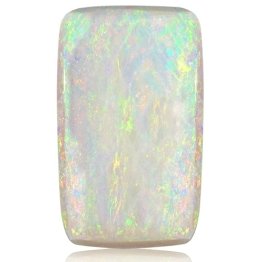
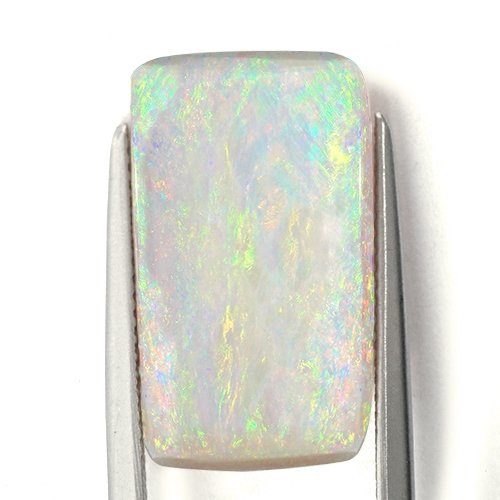
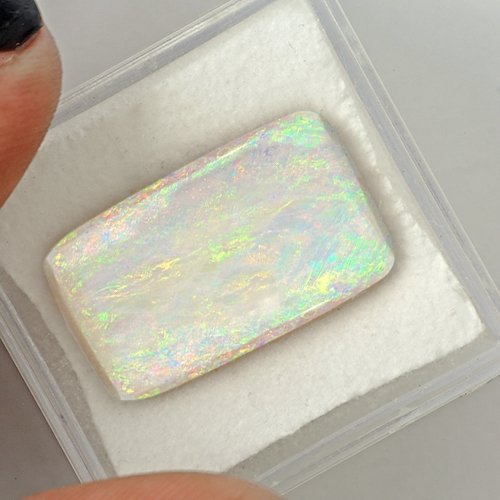
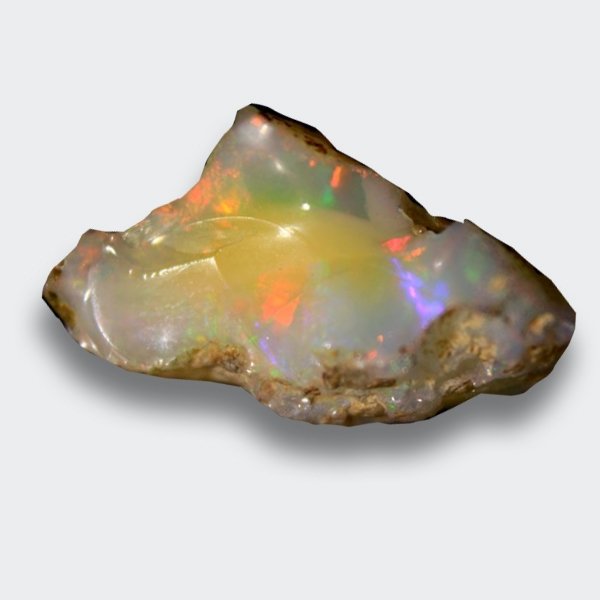
What of you think of this necklace design that is being made right now - I’ve added a halo of stunning and tiny and rare Brazilian Paraiba Tourmalines around a really translucent oval white opal to bring out its magnificent flashes of blue and turquoise.


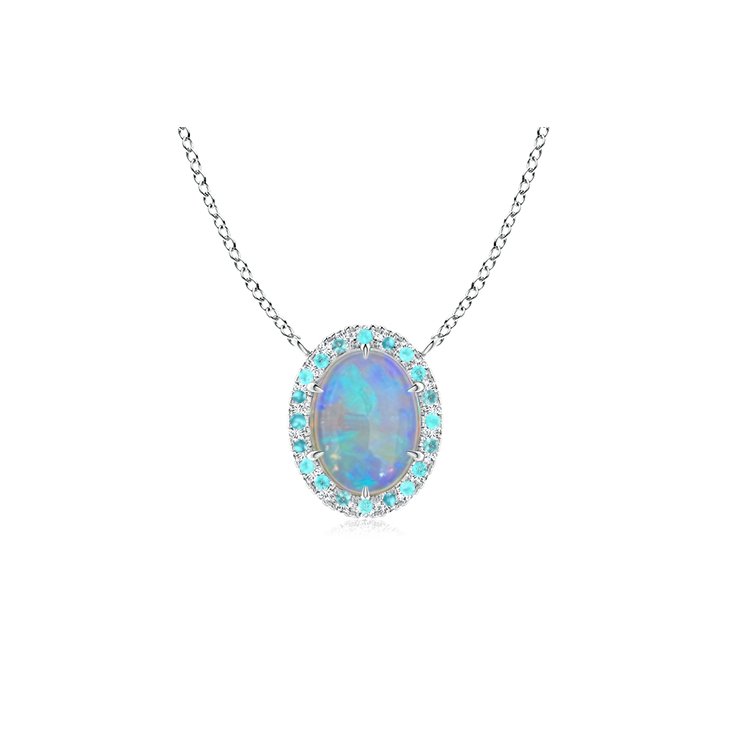
Moonstone
These are named moonstone because of the magical bluish white shimmer they exhibit which resembles the moon. The aura of light appears to glow from within the surface of the stone.
Here’s a gorgeous Moonstone and diamond necklace I designed for a client. I added black rhodium plating to the white gold hidden behind the moonstone setting to maximise the blue flash!
Other precious and semi precious gem varieties that can be white include Quartz, Howlite, Agate, Coral, Zircon and Topaz.




